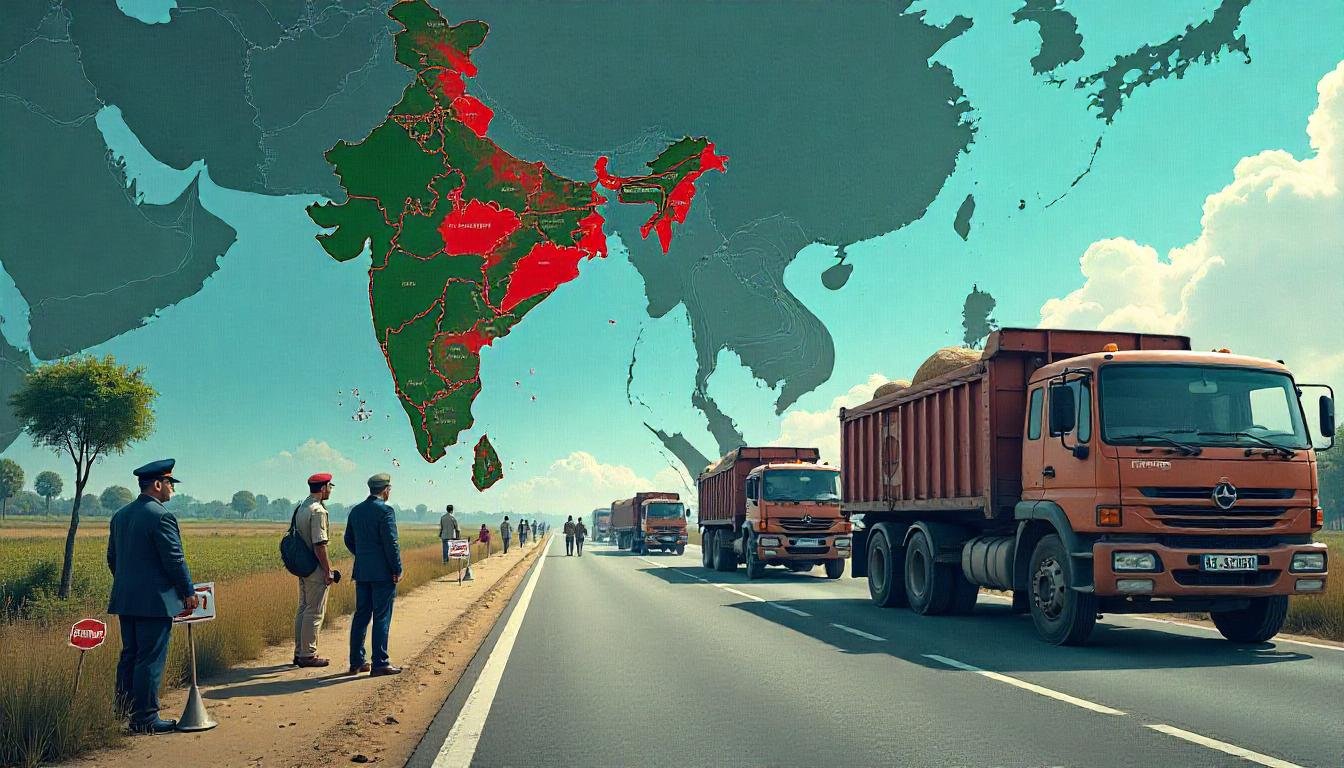New Delhi, April 9. The Indian government has imposed strict restrictions on the use of Indian soil for the import and export of commercial goods to Bangladesh. No Indian port or airport can be used to export Bangladeshi goods to any third country. The central government has recently taken this decision.
In a recent move that could reshape regional trade dynamics, the Indian government has imposed stringent restrictions on the use of its territory for the import and export of commercial goods to and from Bangladesh. According to official sources, Indian ports and airports can no longer be used for transporting Bangladeshi goods to any third country. This decision, taken by the central government, aims to tighten control over cross-border trade activities involving Indian infrastructure.
A notification to this effect was also issued on Tuesday. The Central Board of Indirect Taxes (CBIC) of the Indian government has announced the withdrawal of this facility given to Bangladesh in the field of exports in the media. As a result, Bangladesh will not be able to export goods to any third country using the customs office of any port or airport on Indian soil.
Previously, Bangladesh had access to certain Indian ports and airports for exporting its goods to other nations, which helped facilitate smoother logistics and enhanced trade opportunities. However, under the new directive, this route is no longer viable, potentially impacting businesses and exporters who relied on this channel.
According to special news sources, Indian textile exporters and companies have requested the Center to stop providing this facility to the neighboring country and to issue a ban. Bangladesh has been enjoying this facility since June 2020. Indian exporters have demanded that the government that the companies claim that due to the provision of this facility from India to Bangladesh, the cost of air and transport has increased many times. India has been providing the opportunity to export textiles in particular.
While the government has not disclosed a detailed explanation behind the sudden restriction, analysts believe it could be linked to broader national security considerations or efforts to streamline trade policies. The move may also be a step toward reinforcing India’s regulatory oversight on how its infrastructure is utilized for international trade by neighboring countries.
Indian exporters, mainly from Bhutan, Nepal, Myanmar and Thailand, have reportedly used this facility to export goods. The April 8 notification said that the previous guidelines of this organization are being withdrawn with immediate effect. However, the products that have already entered India will be allowed to leave India as per the previous guidelines. New Delhi took this decision on exporting Bangladeshi products through India at a time when the global trade has been shaken by the US’s industrial policy. According to special sources, this decision is expected to benefit Indian exporters in the textile, footwear, precious stones and jewellery sectors. In fact, Bangladesh is the first competitor in textile exports.
Federation of Indian Export Organizations (FIEO) Director General Ajay Sahay said that this will result in more space available on planes for Indian exports. In the past, exporters often complained that they were getting less space for Bangladeshi products. The Apparel Expert Promotion Council, an organization of textile exporters, had in the past requested the ministry to stop giving this facility to Bangladesh. Sudhir Sekhri, president of the organization, said that 20-30 trucks loaded with (Bangladeshi) goods arrive in Delhi every day. As a result, the process slows down a bit and airlines also take advantage of it. Sometimes, even the airfare for exporting goods gets increased, he said.
This development is likely to prompt significant adjustments in Bangladesh’s trade logistics and may lead to diplomatic dialogues between the two nations. Stakeholders in both countries will now be closely watching how the policy unfolds and what alternatives emerge in the wake of this shift.
